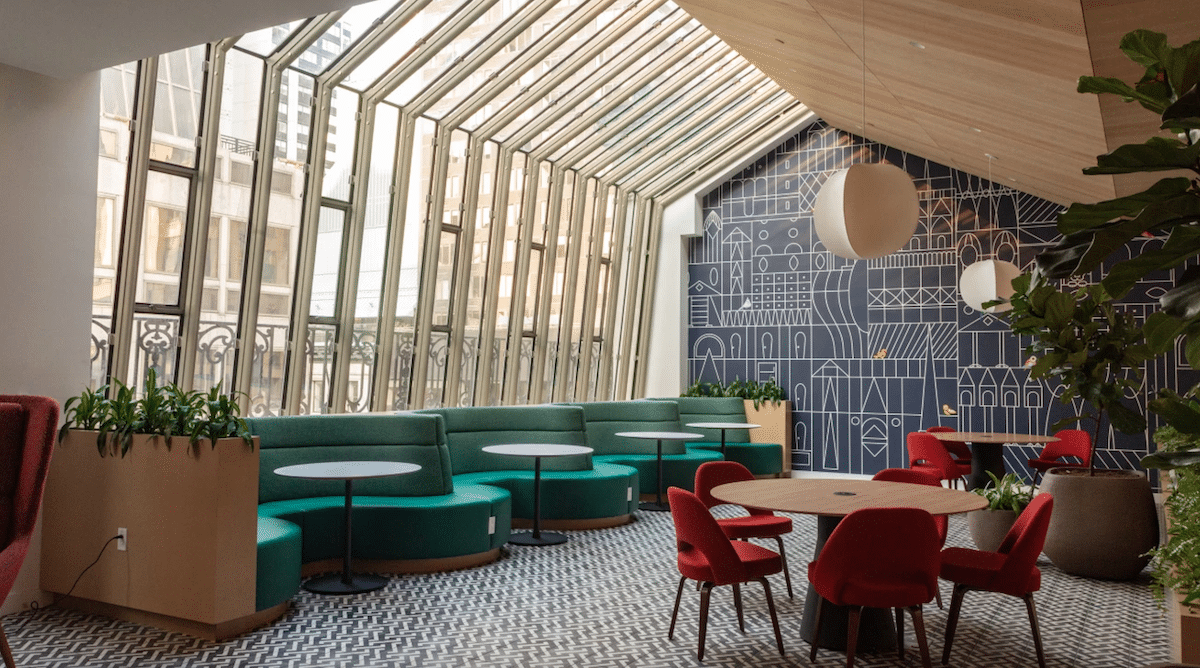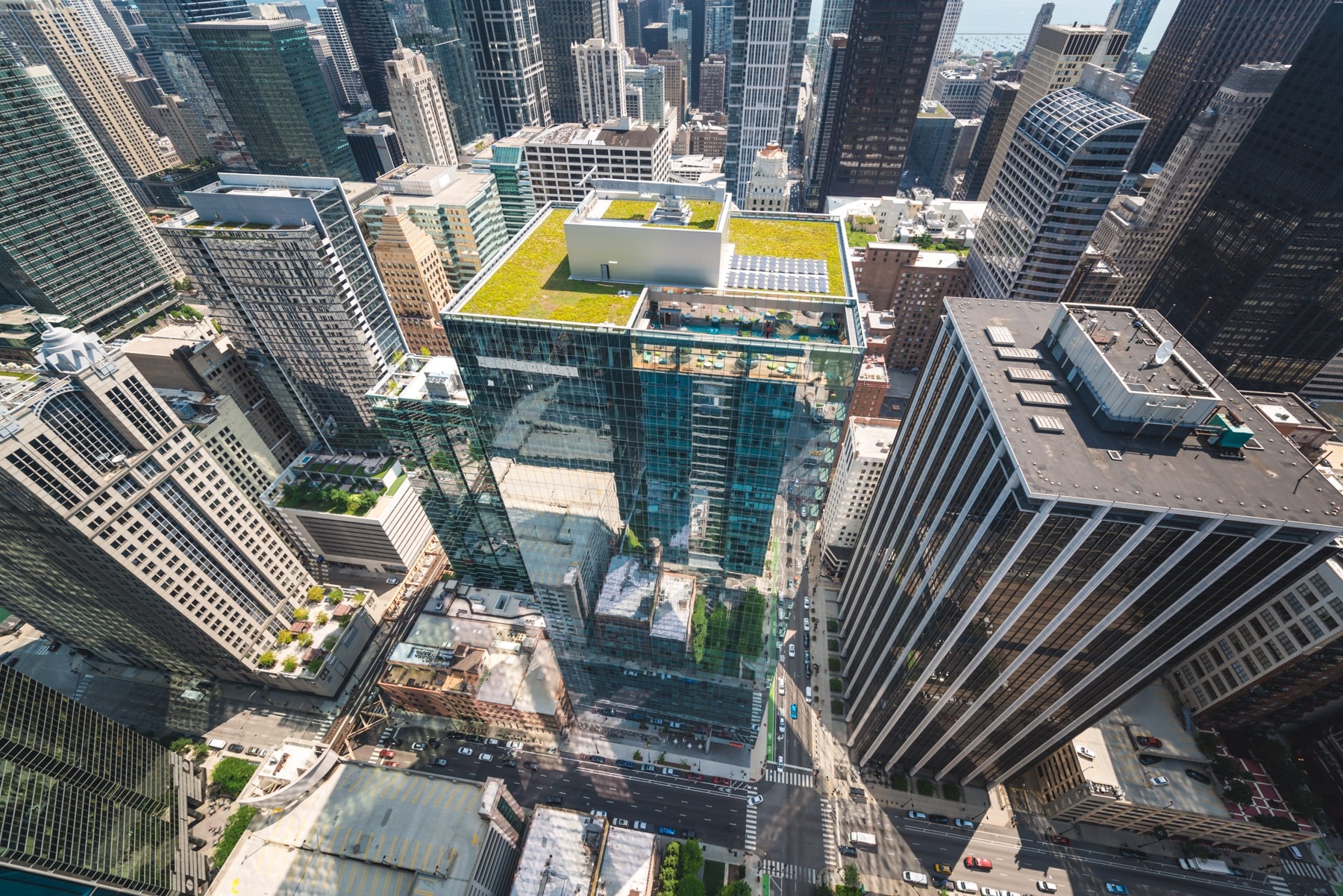The Data vs. How We Actually Work: Why Office Space Efficiency Is Broken and How to Fix It
Walk into a typical office tower on a Tuesday morning, and you might see a few employees trickling in, scattered across half-empty rows of desks. The conference rooms are booked, but half of them are dark. The café is stocked, but largely quiet. By appearances, the company is “back to office.” But by the data? It’s barely at 30% capacity.
The disconnect between how we think work happens and how it actually happens is growing. And it’s costing companies millions in wasted space, poor design, and employee frustration.

Andrew Farah, CEO of Density, has been one of the loudest voices calling attention to this misalignment. His company uses anonymous, radar-based sensors to track how people really use buildings. And the results are stark: most office spaces are underutilized by 50–70%, even among organizations that consider themselves “back.”
But this isn’t just a story about decline, it’s about opportunity. By embracing space utilization data and rethinking design around actual work patterns, companies can reduce costs, improve productivity, and create environments people want to work in!

The Illusion of Presence
As Farah explains in a recent interview, the problem begins with measurement. For decades, commercial real estate decisions relied on badge swipes, seating charts, and occupancy ratios. But those tools only tell us that someone entered a building, not whether they collaborated, focused, or got anything done. Ultimately, that information is relatively useless.
“Headcount is not a proxy for usage,” Farah says. “Presence isn’t productivity.”
Instead, Density’s real-time data reveals something different: usage patterns are sporadic, focused, and incredibly concentrated around certain zones and times. Across millions of square feet of office space, their platform consistently finds:
Over 60% of space goes unused during the typical workday
Utilization peaks mid-week, mid-morning, with steep drop-offs before and after
Desks are used far less than social areas or meeting zones, suggesting the purpose of office space has shifted
In short: the office still matters, but we’re designing and managing it for a version of work that no longer exists. Basing work on 20th-century office models wastes human and real estate capital. But there is a better option!
Reinforcing Evidence from Other Sources
Farah’s insights aren’t isolated. Other research backs up the idea that our workplaces are misaligned with the reality of how knowledge work unfolds.
1. Gallup – Hybrid Work Realities
Gallup’s 2024 State of the Workplace Report found that employees are more engaged when they have autonomy over where and how they work, and that engagement correlates directly with productivity, retention, and innovation.
Rather than fixed office schedules, the best-performing teams operate in “adaptive rhythms”, coming together with purpose, not obligation. That rhythm is impossible to support in a traditional, rigid office setup.
2. Gensler – Designing for the New Purpose of the Office
According to Gensler’s 2023 U.S. Workplace Survey, the office is no longer about “clocking in”; it’s about community, creativity, and connectivity. Their research shows that workers are most satisfied when the workplace helps them do three things:
Collaborate and innovate
Build culture and relationships
Access tools or experiences they can’t get at home
“The office needs to compete with the comfort and efficiency of remote work,” the report says. That doesn’t mean beanbags and cold brew, it means space that’s intentionally designed for how people want to work.

3. MIT Sloan Management Review – Rethinking Space Allocation
A 2024 study in MIT Sloan Management Review emphasized that agility in space use is now a business advantage. Companies that rapidly adjusted workspace allocation, shifting meeting rooms, adding phone booths, eliminating unused zones—saw faster return-to-office adoption and lower real estate costs.
The paper also cautioned against simplistic downsizing: “You don’t need less space. You need a smarter space!”
4. Harvard Business Review – Quiet Constraints of Office Culture
Harvard Business Review highlights an often overlooked issue: traditional office setups reinforce passive, outdated behaviors. Assigned seating and hierarchical layouts discourage spontaneous collaboration, while overly open plans lead to distraction and withdrawal.
In contrast, activity-based working (ABW)—where employees choose from a variety of space types based on their task- leads to higher performance, lower burnout, and a more inclusive workplace culture.
5. Owl Labs – 2024 State of Hybrid Work
In their latest report, Owl Labs found that 79% of employees say flexibility improves productivity, and 66% say they’d choose a job with flexible office use over a rigid five-day schedule, even with a higher salary.
What does that mean for real estate strategy? Offices must now earn the commute, offering experiences and spaces that make in-person work meaningfully better than virtual alternatives.
How to Improve Office Space Efficiency In The Real World?
Recognizing the mismatch between space and behavior is just the first step. The next is action. Here are five strategies, backed by data and successful case studies, that companies can use to align real estate with real work:
1. Measure, Don’t Guess
You can’t optimize what you don’t understand. Before cutting square footage or reconfiguring floor plans, install utilization sensors (like Density’s) or use digital booking tools to gather insights on how, when, and where space is being used.
Look for:
Peak usage times
Most and least utilized rooms
Dead zones or bottlenecks
Average dwell time per employee or team
Then use this data to inform design, not gut instinct.
2. Ditch the Assigned Desk Model
If only 30-40% of your workforce is in the office on a given day, why are you assigning 1:1 desks? Embrace desk hoteling, where employees reserve workstations as needed. This frees up square footage for collaborative zones, phone booths, or wellness spaces.
Better yet: implement zoning by activity quiet zones for deep work, lounge areas for casual meetups, and tech-equipped rooms for hybrid meetings.
3. Invest in Modular Furniture and Layouts
The future is not fixed; it’s modular. Furniture systems that can be reconfigured, stacked, or moved easily allow spaces to flex with changing needs.
One tech firm in San Francisco used mobile partitions and plug-and-play furniture to convert an underutilized training space into a temporary project lab, saving $350,000 in expansion costs and boosting interdepartmental collaboration.
4. Incentivize Purposeful Presence
Don’t just mandate office days. Curate in-office moments that matter: executive Q&As, cross-functional workshops, social events, or launch planning. Make office time feel intentional, not obligatory.
This “eventized” approach increases space value while giving employees a reason to show up and use the space as designed.
5. Redesign for Flexibility, Not Density
Companies obsessed with squeezing more bodies into fewer square feet often make the office less usable. Instead, prioritize flexible design—wider corridors, multi-use rooms, high-quality ventilation, and access to daylight.
Farah notes that many of the most successful Density clients didn’t shrink their offices—they redesigned them around actual use. “Some even added space,” he says, “once they saw how their teams really work.”
Final Thought: The Office Isn’t Dead. But It’s Definitely Being Rewritten.
The debate over remote vs. in-office misses the point. The real question is: What is the purpose of the office in a post-remote world?
Data from Andrew Farah, Gallup, Gensler, and others shows that the answer isn’t just flexibility, it’s fitness for purpose. We don’t need less space. We need space that serves the way people actually work today: asynchronously, collaboratively, socially, and often intermittently.
The companies that win won’t just cut leases. They’ll invest in intelligence, adaptability, and design. Because in the end, the most valuable square footage is the space people actually want to use.

